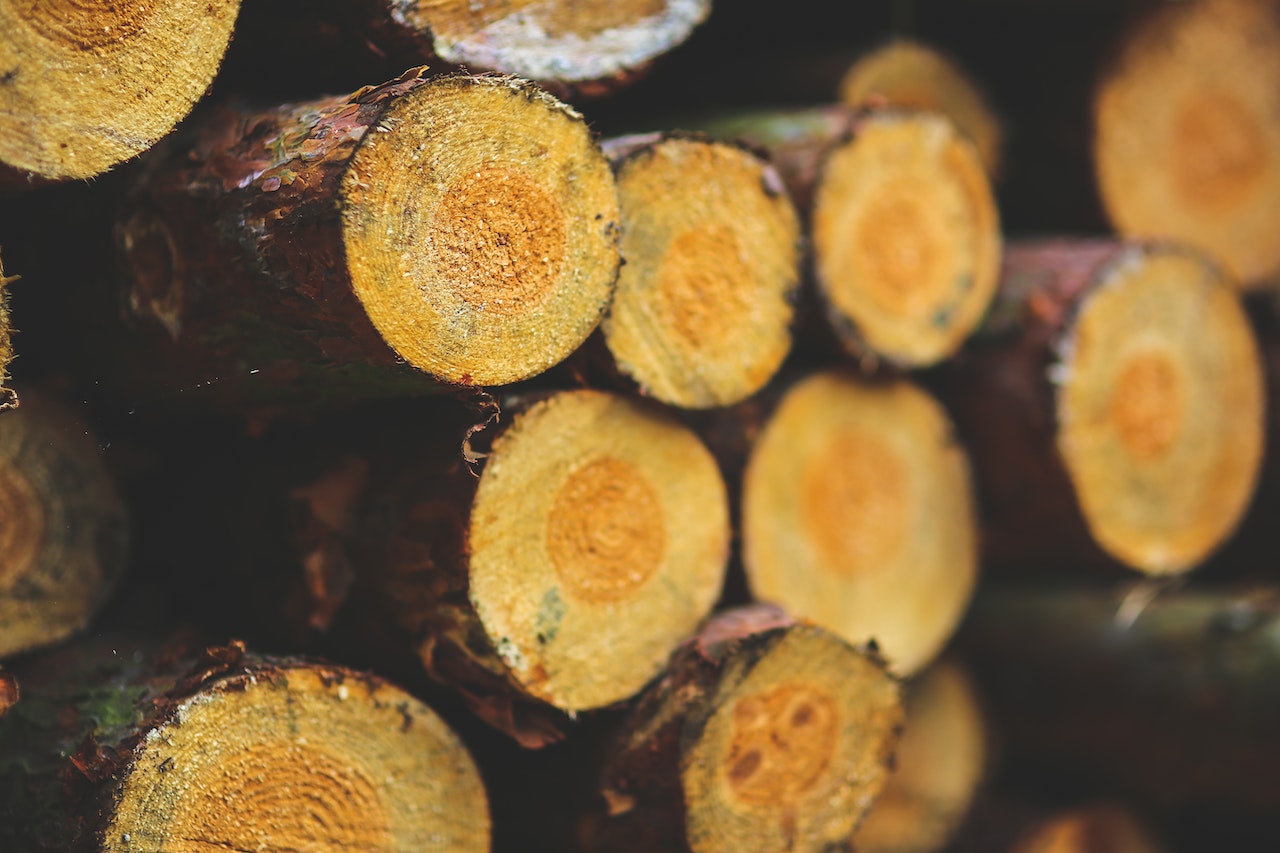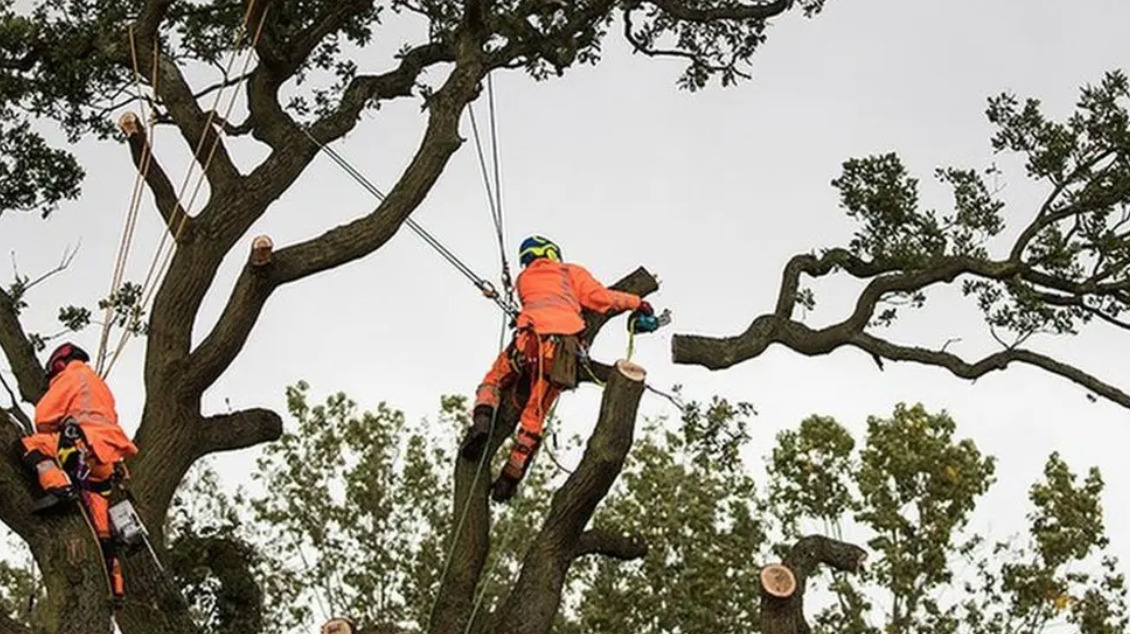Tree decay prevention is a crucial aspect of maintaining the health and longevity of your trees. Early detection and intervention can make all the difference in preventing irreversible damage to these valuable assets. In this comprehensive post, we will explore various aspects of tree decay evaluation and management, providing you with in-depth knowledge on the subject.
We’ll begin by identifying common signs of decaying trees, such as discolored leaves, weak branches, fungal growths, and hollow cavities. Next, we’ll delve into specific types of rot – white rot, soft rot, heart rot – discussing preventative measures for each one.
Additionally, addressing root rot will be covered with emphasis on proper drainage systems and soil care practices, and in some cases emergency tree removal if the tree is beyond bouncing back. The importance of consulting certified arborists for diagnosing different types of decay fungi and recommending appropriate treatment options will also be highlighted.
Lastly but equally important is maintaining overall tree health through regular fertilization; adequate watering practices; protection against mechanical injuries like those caused by gardening equipment or improper pruning cuts.
This extensive guide aims to provide you with valuable insights into tree decay prevention so that you can enjoy healthy thriving trees in your landscape for years to come.
Signs Your Tree is in Trouble
To avoid being confused by tree decay, it’s important to detect it early. Keep an eye out for leaves that have changed color, weak branches, fungal growths, and empty spaces within the trunk.
Discolored Leaves = Poor Health
Be on the lookout for leaves that have unusual shapes or colors, as this may be a sign of a nutrient deficiency or disease. Observe your trees and look for any signs of decay especially during sprout and growth seasons like spring through fall.
Weak Branches = Potential Breakage
To maintain a healthy tree, it is essential to have sturdy branches. If you observe any fractured or excessively swaying limbs, then it’s time to trim them down.
Fungal Growths = Internal Rot
- Mushrooms at the base = root rot
- Conks on the trunk = heart rot
- Powdery mildew on leaves = foliar diseases
If you see any of these, call in a certified arborist like us to diagnose the issue.
Hollow Cavities = Structural Is sues
Large hollow areas in trunks or branches can compromise the tree’s structural integrity – if it’s bad enough, it may need to be removed for safety reasons.Click to Tweet
Preventing White Rot in Trees
To prevent white rot, a fungal decay that causes the wood fibers of trees to turn white and weaken them, you can take these measures.
Proper Pruning Techniques for Healthy Growth
Regularly prune your trees to promote healthy growth and remove dead or diseased branches that could harbor fungi. Use clean tools and avoid making large cuts that can expose the tree to pathogens.
Importance of Good Drainage Systems
Poor drainage can create an environment conducive to fungal growth, so make sure there’s sufficient water flow away from the tree’s base by installing appropriate drainage systems like French drains or dry wells.
Essential Nutrients Provided by Fertilization
- Nitrogen: promotes foliage development and overall vigor;
- Phosphorus: aids root growth and fruit production;
- Potassium: enhances resistance against diseases like white rot.
Fertilizing your trees regularly would help replenish these vital nutrients which are necessary for maintaining strong immune defenses against harmful organisms like those causing white rot. Consult a certified arborist like Owens Bros Tree Service for the appropriate fertilization schedule and product recommendations tailored to your specific tree speci”Protect your trees from white rot and promote healthy growth with proper pruning, good drainage systems, and essential nutrients through fertilization. #treecaretips #whiterotprevention ” Click to Tweet
Controlling Soft Rot in Trees
Soft rot is a common tree decay issue that affects the inner bark tissue (phloem), causing it to become soft and spongy while emitting a foul odor.
To prevent soft rot from damaging your trees, there are several essential steps you can take:
Stay Hydrated
Maintaining proper hydration is crucial for overall tree health. During dry periods, ensure that your trees receive adequate water by following a regular watering schedule. This will help them resist pathogens responsible for soft rot and other diseases.
Watch Your Tools
Trees can be susceptible to damage caused by lawn mowers, weed trimmers, or other gardening tools. These injuries create entry points for pathogens like those responsible for soft rot. Take care when using such equipment around your trees and consider installing protective barriers or mulch rings to minimize potential harm.

Tree Cutting Done Right
Practicing correct pruning techniques is vital in preventing the spread of soft rot-causing organisms. By making clean cuts at appropriate locations on branches and removing dead or diseased limbs promptly, you reduce the likelihood of infection spreading throughout the tree.
If you’re concerned about possible soft rot affecting your trees in Bronx or Manhattan areas, don’t hesitate to contact us at Owens Tree Bros – We are experienced professionals in tree removal, trimming, and overall care. We do free estimates and consultations, and have been doing it since 1959. Click to Tweet
Preventing Heart Rot in Trees
Heart rot is a common issue caused by fungi attacking the center of a tree’s trunk, leading to structural weakening over time.
It often enters through wounds inflicted by storms, insects, or incorrect pruning.
To minimize risks, practice correct pruning techniques, protect trees from physical damage, and monitor for signs of insect infestations.
Proper Pruning Techniques
Follow recommended guidelines for safe and effective trimming methods that promote healthy growth and reduce potential entry points for decay-causing fungi.
Protecting Trees from Damage
Prevent mechanical injuries caused by gardening equipment or other external factors by using guards or barriers around the tree’s base and being cautious during lawn maintenance activities.
Monitoring for Insect Infestations
Regularly inspect trees for signs of insect activity such as holes in the bark or sawdust-like frass deposits around their base.
If an infestation is suspected, consult with a certified arborist who can recommend appropriate treatment options.
Maintaining overall tree health is vital in preventing various forms of decay, including heart rot.
By following proper pruning practices, protecting trees from physical damage, and monitoring for insect infestations, you can help extend their lifespan while minimizing risks associated with tree decay.
Root Rot: The Silent Killer of Trees
Root rot is a sneaky little devil that can wreak havoc on your trees, causing dieback and even death.
Drainage is Key
Good drainage is essential to prevent waterlogged conditions that promote fungal growth and infection.
Don’t Compact Your Soil
Compacted soil limits oxygen availability, weakening the roots and making them more susceptible to diseases like root rot.
Prevention is Better Than Cure
Applying fungicides can be a preventive measure to protect your trees from potential infections, but consult with a certified arborist before using any chemicals.
If you notice signs of root rot in your trees, like yellowing leaves, wilting branches, or dark-colored roots near the surface of the ground, act quickly by consulting professionals like Owens Tree Bros. We specialize in Bronx and Manhattan tree removal services.
They have experience dealing with various types of decay fungi affecting trees and can provide expert advice on how best to address these issues. Take a proactive approach to tree care and remember that prevention is key.Click to Tweet
Consulting Certified Arborists for Tree Decay Issues
Got a tree that’s looking a little worse for wear? Call us to diagnose and treat any decay-related problems.
- Diagnose decay fungi: Arborists know their fungi and can identify the specific type causing decay in your tree.
- Recommend treatment options: Once the fungus is identified, they’ll suggest the best course of action, whether it’s pruning or applying fungicides.
- Safe inspections: Arborists follow strict safety protocols to keep themselves and your property safe during inspections.
Prevention is key to maintaining tree health, so make sure to fertilize, water, and prune your trees correctly, and protect them from mechanical injuries. And if you suspect any issues, don’t hesitate to call in a certified arborist to keep your trees healthy and happyMaintaining Tree Health: The Key to Preventing Decay
A thriving tree is a content one, and these that are in good health are less liable to succumb to illness or decay, ensuring they can live for an extended period of time without posing any danger.
Fertilization: The Nutrient Boost Your Trees Need
Regular fertilization is like a vitamin boost for your trees, providing them with the nutrients they need to grow strong and fight off diseases. Ensure you are providing your trees with the appropriate fertilizer at an opportune moment.
Watering: Don’t Let Your Trees Get Thirsty
Ensure your trees are sufficiently hydrated, particularly during arid conditions or water shortages. Make sure they’re getting enough to drink, especially during dry spells or droughts.
Protect Your Trees from Mechanical Injuries
- Avoid damaging roots when planting nearby plants.
- Create buffer zones around trunks using mulch rings.
- Keep lawn equipment away from trunks to prevent injuries.
And don’t forget to prune your trees properly to minimize wounds that could let in disease.”Prevent tree decay and keep your trees healthy with regular fertilization, proper watering, and protecting them from mechanical injuries. #TreeCareTips ” Click to Tweet
FAQs in Relation to Tree Decay Prevention
How to prevent tree decay?
Keep your trees healthy by fertilizing, watering during droughts, protecting against injuries, and using proper pruning techniques. Also, watch out for insect infestations and ensure proper drainage to avoid soil compaction.
What is the Shigo CODIT theory?
The Shigo CODIT (Compartmentalization of Decay in Trees) theory explains how trees naturally respond to wounds by isolating affected areas to limit the spread of decay and preserve the tree’s health.
How to stop tree trunk rot?
Prevent tree trunk rot by removing dead or damaged branches, protecting against physical damage, applying fungicides when necessary, and consulting certified arborists for professional advice.
Why don’t live trees rot?
Live trees resist rot by producing chemical barriers at wound sites and isolating infected areas to prevent pathogen spread. Proper maintenance like fertilization, watering, and protection against injuries further strengthens these defenses.
Wrapping Up Tree Decay
Don’t let tree decay ruin your day – keep your trees healthy and safe with these prevention tips.
- Identify signs of decay like discolored leaves, weak branches, fungal growths, and hollow cavities.
- Address decay with proper techniques like pruning, fertilization, and fungicide application.
- Consult certified arborists for professional diagnosis and treatment recommendations.
- Maintain overall tree health with regular fertilization, adequate watering, and protection against mechanical injuries.
Remember, a healthy tree is a happy tree!